Trading SPX500 CFD with $50
Key Data
Previous Close
5493.6
Open
5508.9
Day’s Range
5454.9-5536.4
Contracts specifications
Contract Size
10
Leverage
50x- 200x
Minimum Volume per Trade
1000
Trading Hours
OFF
Company Profile
S&P 500
The S&P 500, or Standard & Poor's 500 Index, is a stock market index that measures the performance of 500 of the largest publicly traded companies in the United States. It is one of the most widely followed stock indices and is considered a key indicator of the overall health of the U.S. stock market. Here's a detailed look at the S&P 500:
S&P 500 Index:
1. Composition:
- The S&P 500 comprises 500 large-cap companies listed on the New York Stock Exchange (NYSE) or NASDAQ.
- The constituent companies represent a variety of sectors, including technology, health care, financials, consumer discretionary, industrials, and more.
2. Calculation:
- The S&P 500 is a market-cap-weighted index. The market capitalization of each constituent company determines its weight in the index.
- Larger companies have a greater impact on the value of the index.
3. Major Sectors:
- Major sectors represented in the S&P 500 include technology (e.g., Apple, Microsoft), health care (e.g., Johnson & Johnson, Pfizer), finance (e.g., JPMorgan Chase, Bank of America), and others.
4. Market capitalization:
- The S&P 500 is often used as a measure of the total market capitalization of the U.S. stock market.
- Changes in the index value reflect changes in the collective market value of its constituent companies.
5. Significance:
- The S&P 500 is widely regarded as a leading indicator of U.S. stock market performance and is often considered representative of the broader U.S. economy.
- It is often used by investors and fund managers as a benchmark against which to measure the success of their investments.
6. Historical Significance:
- The S&P 500 was introduced in 1957 by Standard & Poor's, a financial services company.
- It is one of the oldest and most recognized stock market indices in the world.
7. Periodic Review:
- The composition of the S&P 500 is periodically reviewed to ensure that it accurately reflects the market. Companies may be added or removed based on factors such as market capitalization and industry representation.
8. S&P 500 Futures and ETFs:
- Investors can gain exposure to the S&P 500 through futures contracts, allowing them to speculate on the index's future movements.
- Exchange-traded funds (ETFs) that track the S&P 500 provide a convenient way for investors to invest in the index.
9. Influencing Factors:
- Economic data: Economic indicators such as GDP growth, unemployment rates, and consumer spending can affect the S&P 500.
- Corporate Earnings: Earnings reports from S&P 500 companies are closely watched and can influence the direction of the index.
- Interest rates: Changes in interest rates and monetary policy decisions by the Federal Reserve can affect the S&P 500.
10. Market hours:
- The S&P 500 follows the trading hours of the New York Stock Exchange and the NASDAQ, typically from 9:30 a.m. to 4:00 p.m. Eastern Time.
In summary, the S&P 500 is an important benchmark for the U.S. stock market, reflecting the performance of a diverse group of large-cap companies.It plays a central role in financial markets and serves as a key reference point for investors and analysts assessing trends in the U.S. economy and equity markets.
Explore More Market Insights
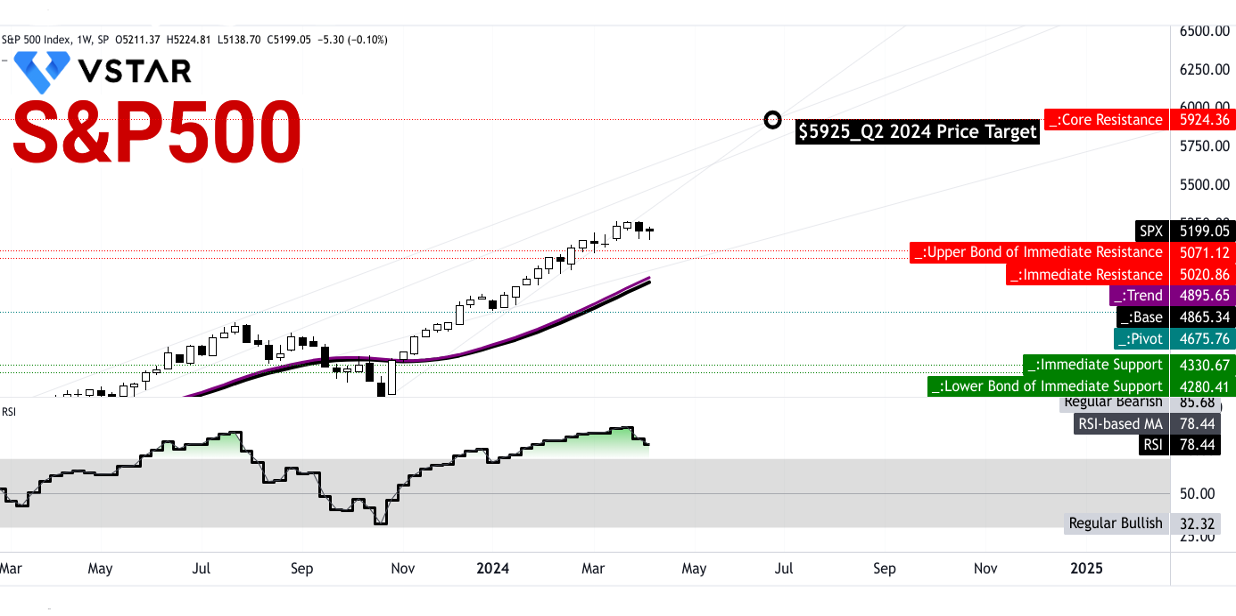 US Economic Trends: CPI, PPI, and Stock Market ImplicationsExploring the March 2024 CPI and PPI reports reveals insights into inflationary pressures, sectoral dynamics, and implications for monetary policy and market indices like the S&P 500 and Nasdaq 100.Read article
US Economic Trends: CPI, PPI, and Stock Market ImplicationsExploring the March 2024 CPI and PPI reports reveals insights into inflationary pressures, sectoral dynamics, and implications for monetary policy and market indices like the S&P 500 and Nasdaq 100.Read article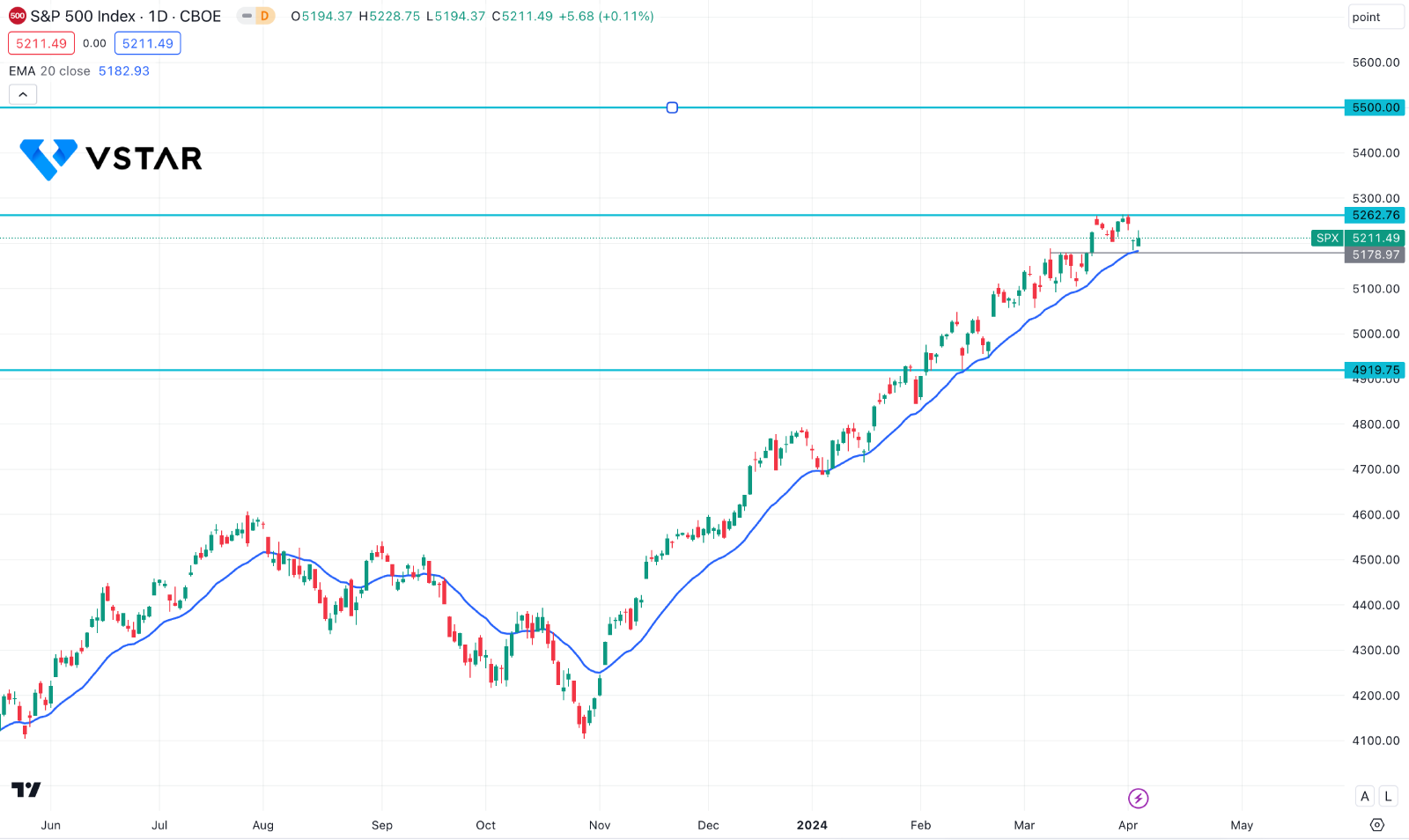 S&P 500 Maintained The Growth After The Mixed PMI DataWednesday marked a positive close for the S&P 500 and Nasdaq, notwithstanding the deceleration in growth of the U.S. services sector in March.Read article
S&P 500 Maintained The Growth After The Mixed PMI DataWednesday marked a positive close for the S&P 500 and Nasdaq, notwithstanding the deceleration in growth of the U.S. services sector in March.Read article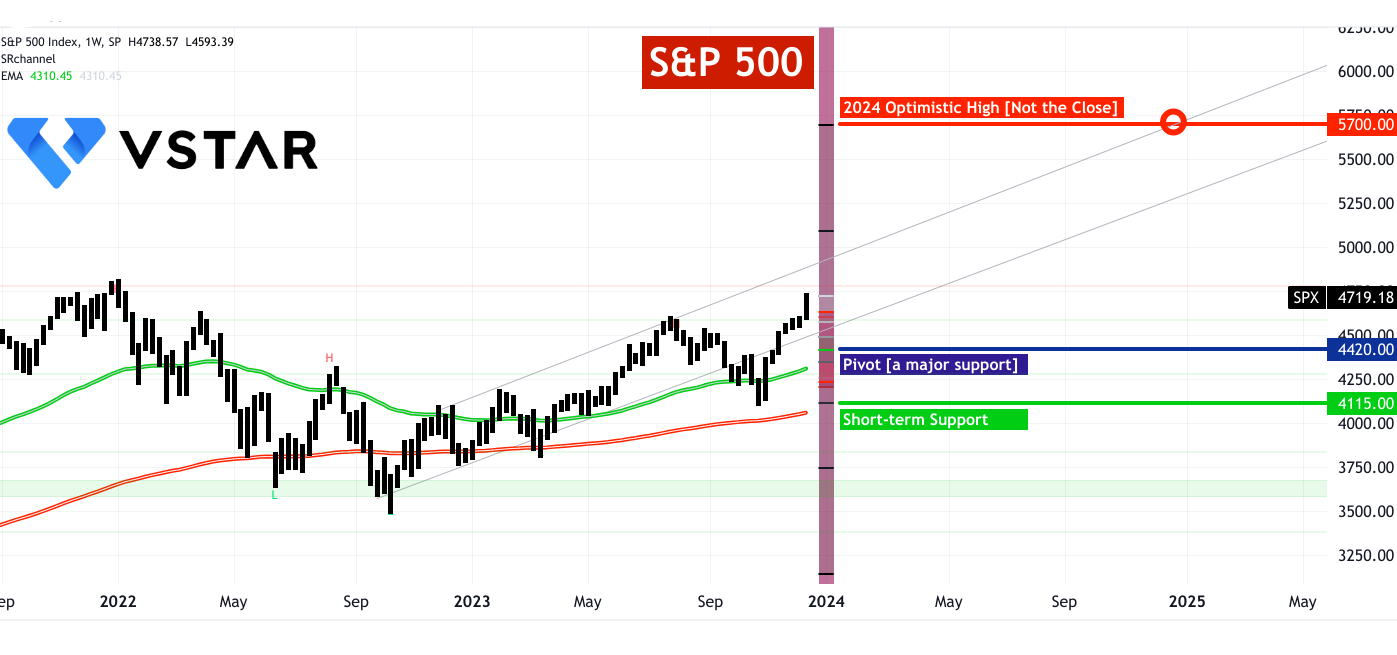 S&P 500's 2024 Outlook: Valuation Quandaries and Fundamental ComplexitiesExploring the S&P 500 market outlook technically and fundamentally for projecting investment moves in 2024.Read article
S&P 500's 2024 Outlook: Valuation Quandaries and Fundamental ComplexitiesExploring the S&P 500 market outlook technically and fundamentally for projecting investment moves in 2024.Read article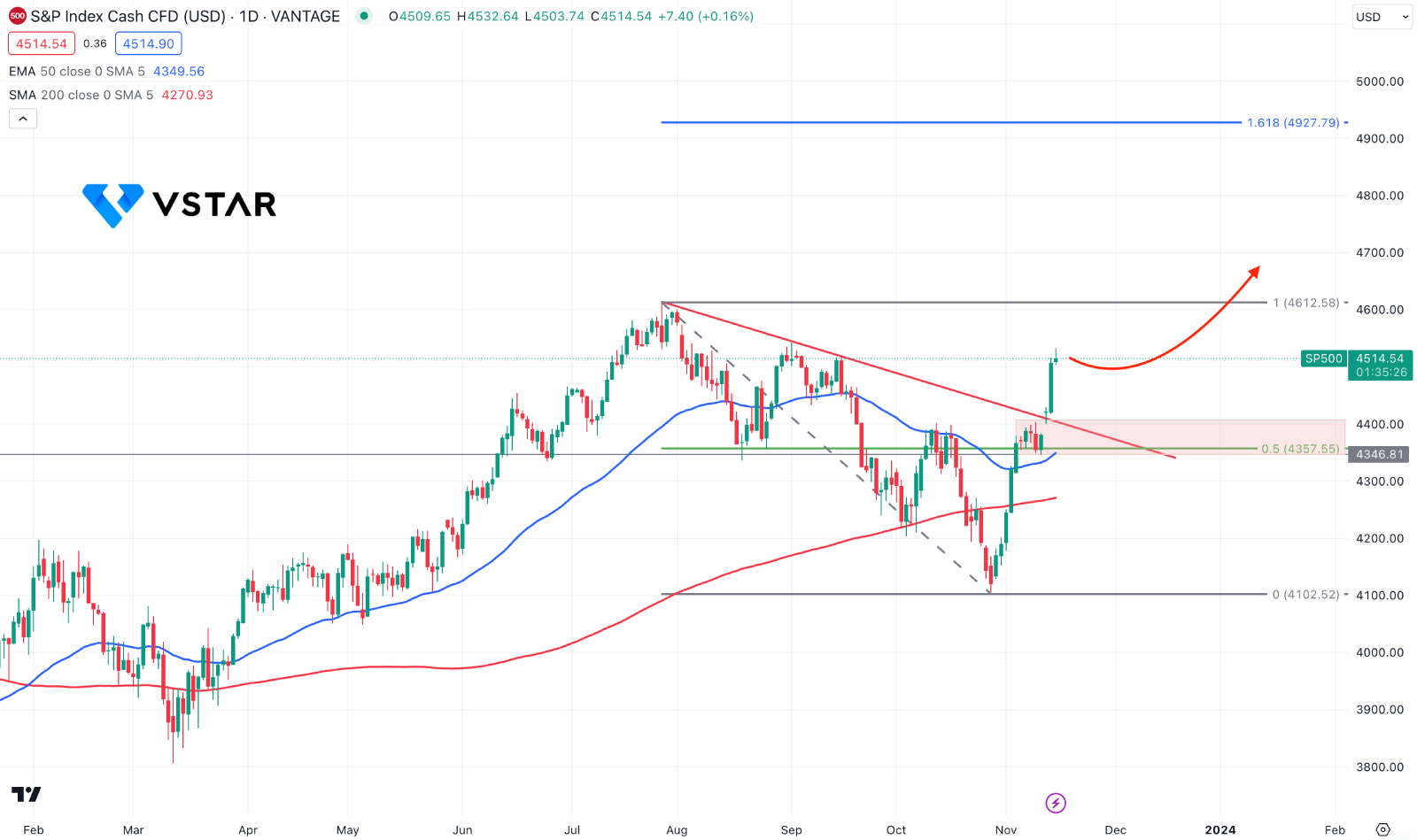 Can Weaker PPI Encourage Stock Bulls? S&P 500 Technical AnalysisOn Tuesday, the tech-heavy Nasdaq and the benchmark S&P 500 posted their largest daily percentage gains over six months. It was bolstered by consumer price data that was weaker than anticipated.Read article
Can Weaker PPI Encourage Stock Bulls? S&P 500 Technical AnalysisOn Tuesday, the tech-heavy Nasdaq and the benchmark S&P 500 posted their largest daily percentage gains over six months. It was bolstered by consumer price data that was weaker than anticipated.Read articleTrading Signals
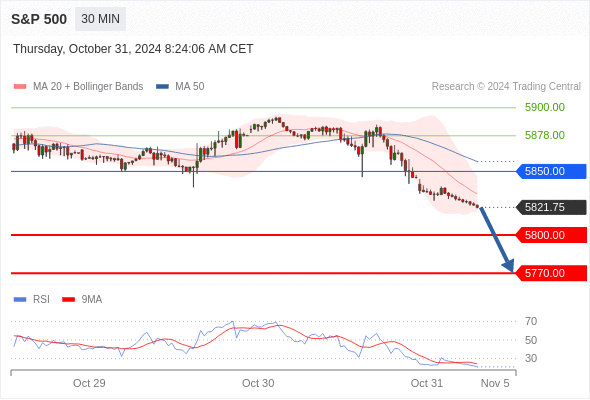
is Pivot(5850.00)
Trade Strategyshort positions below 5850.00 with targets at 5800.00 & 5770.00 in extension.
Alternative Strategyabove 5850.00 look for further upside with 5878.00 & 5900.00 as targets.
Commentsthe RSI has broken down its 30 level.
supports and Resistances
5800.00
5770.00
5565.00
5821.75 (Last)
5850.00
5878.00
5900.00

Trade S&P 500 CFDs with VSTAR
- Ultra-low trading cost with tight spreads and 0 commission
- Top-tier deep liquidity to ensure extremely low slippage.
- Lighting-fast order execution within milliseconds
- Fully regulated with several licenses, trusted across 100+ national borders.